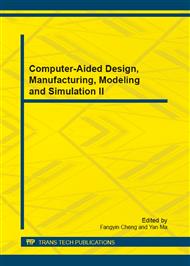p.62
p.66
p.71
p.78
p.84
p.89
p.94
p.99
p.103
Optimization of Hybrid Turbocharger Applied on Common Rail Diesel Engine with Exhaust Gas Recirculation
Abstract:
Turbocharger is an effective technique to achieve higher thermal efficiency reduced emissions. And hybrid turbocharger is proven to be a promising technique to eliminate the well-known 'turbo-lag' effect of the turbocharger. In this paper, a global optimization of hybrid turbocharger technique with variable geometry turbine and exhaust gas recirculation was carried out. The diesel engine was modeled by GT-SUITE software, which is a 1D simulation environment. Moreover, a dynamic programming based optimizer, which was developed in Simulink, was integrated with the diesel engine model. Simulations results show that the optimized parameters can improve the engine fuel economy significantly under Chinese typical urban driving cycle.
Info:
Periodical:
Pages:
84-88
Citation:
Online since:
December 2012
Authors:
Keywords:
Price:
Сopyright:
© 2013 Trans Tech Publications Ltd. All Rights Reserved
Share:
Citation:


